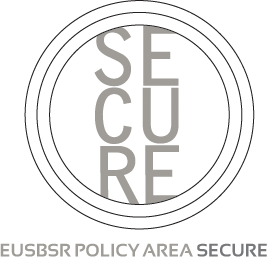About Me
Laser cutting technology has revolutionized varied industries, offering precision, speed, and flexibility. Whether or not you are running a small fabrication shop or managing a big production facility, choosing the fitting laser cutting machine is crucial for enhancing your workshop's efficiency. The proper machine can improve productivity, reduce waste, and permit you to tackle a broader range of projects. Here is a guide to help you select the very best laser cutting machine in your workshop.
1. Understand Your Cutting Needs
Before making any selections, it's essential to understand the types of materials you will be cutting and the thicknesses involved. Laser cutting machines can work with a wide range of materials, together with metals, plastics, wood, acrylic, and ceramics. The machine you choose have to be appropriate with the materials you plan to cut. For example, if you're cutting primarily metal, a fiber laser cutting machine could be ideal. However, for non-metal supplies comparable to wood or acrylic, a CO2 laser could also be more suitable.
Additionally, consider the everyday thickness of the supplies you plan to cut. Machines differ in their cutting capabilities—some are higher suited for thin supplies, while others excel at cutting thick sheets. Should you want versatility, you might wish to select a laser cutter that can handle a range of fabric thicknesses.
2. Consider the Power of the Laser
The laser's energy is another critical factor to consider. Laser power is normally measured in watts, with higher wattage indicating the machine’s ability to cut through thicker and more durable materials. For light-duty work or intricate cutting of thin supplies, a machine with a lower wattage (e.g., 40W to 150W) may suffice. Nevertheless, for industrial-grade cutting or processing thick metals, you might require machines with energy rankings ranging from 500W to 1000W or more.
Choosing the right power will help you balance speed, quality, and the range of materials you may process. A higher-powered laser typically permits for faster cutting and greater precision when dealing with thicker materials. But keep in mind that higher wattage machines are sometimes more expensive.
3. Laser Type: CO2 vs. Fiber
Laser cutting machines generally use one in all types of lasers: CO2 lasers or fiber lasers. The selection between the 2 depends on the supplies you work with and the precision you require.
- CO2 Lasers: These lasers are versatile and well-suited for cutting non-metal supplies like wood, plastic, acrylic, and leather. They offer excellent precision and are widely used for engraving as well. In case your workshop focuses primarily on cutting and engraving softer supplies, a CO2 laser could also be a better fit.
- Fiber Lasers: Fiber lasers are highly efficient and are generally preferred for cutting metals reminiscent of metal, aluminum, and brass. They produce a more concentrated beam, which leads to cleaner cuts with minimal heat distortion. Fiber lasers are more energy-efficient and have a longer lifespan compared to CO2 lasers. If your workshop focuses on metal cutting, a fiber laser is likely the higher choice.
4. Machine Size and Workspace
The physical measurement of the laser cutting machine is a crucial factor, particularly you probably have limited space in your workshop. Laser cutting machines range in size, with compact models designed for smaller workshops and larger models for industrial settings.
Consider the utmost workpiece dimension you will be cutting and make sure the machine you select can accommodate these dimensions. Additionally, check the workbed’s configuration to make sure it suits your workshop layout. Some machines could have adjustable worktables or specialised fixtures that assist optimize space and improve productivity.
5. Automation and Software Compatibility
Modern laser cutting machines usually come outfitted with automated options, similar to automated loading and unloading, nesting software for materials optimization, and advanced control systems. These features can drastically improve your effectivity and reduce manual labor, but they come with a higher worth tag.
Additionally, be sure that the machine’s software is compatible with your current design systems. Many laser cutters support CAD and CAM programs, however compatibility can range from machine to machine. If your workshop depends on specific software, confirm that the laser cutting machine can seamlessly integrate with your current setup.
6. Maintenance and Help
Laser cutting machines require regular maintenance to keep them working smoothly. Some machines come with self-diagnostic systems, however all machines will need periodic servicing and cleaning, equivalent to lens and mirror cleaning, gas replacement, and software updates.
When selecting a laser cutting machine, consider the producer's fame for customer assist and after-sales service. A producer with a solid support system can prevent time and money, especially if technical points arise.
7. Budget and Return on Investment (ROI)
Finally, consider your budget and the potential return on investment. High-end laser cutters may be costly, but they usually offer better speed, precision, and durability, which can translate into increased productivity and fewer materials wastages over time. Nevertheless, in case your workshop doesn’t require heavy-duty use, it's possible you'll discover that a less costly machine can meet your needs without compromising quality.
In addition to the initial buy value, factor in operational costs corresponding to energy consumption, upkeep, and consumables (e.g., laser tubes, gas). Weigh these ongoing costs towards the anticipated benefits in terms of improved efficiency and profitability.
Conclusion
Selecting the best laser cutting machine for your workshop depends on various factors, together with the materials you work with, your cutting requirements, machine power, size constraints, and budget. By careabsolutely evaluating these considerations, you possibly can choose a machine that enhances your production capabilities and boosts the overall effectivity of your workshop. Always prioritize the long-term benefits and make an informed determination based mostly on your specific needs.
In the event you adored this short article and you would want to get more details with regards to لیزر برش generously check out our web-site.
Location
Occupation





